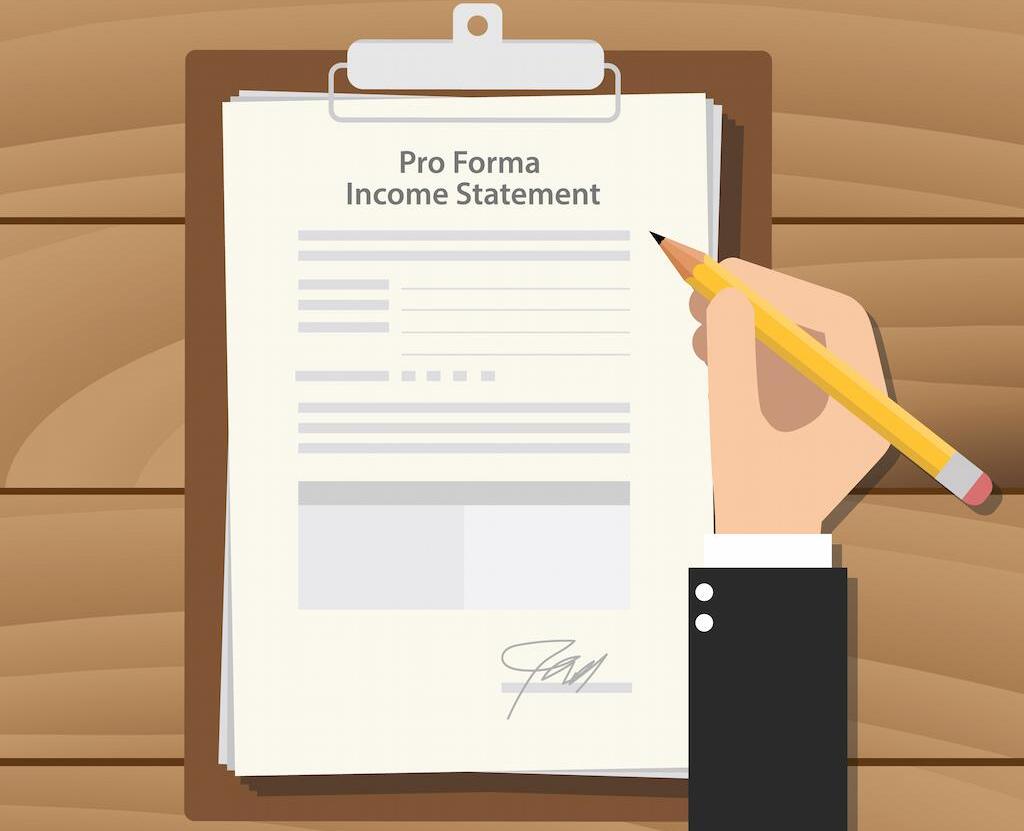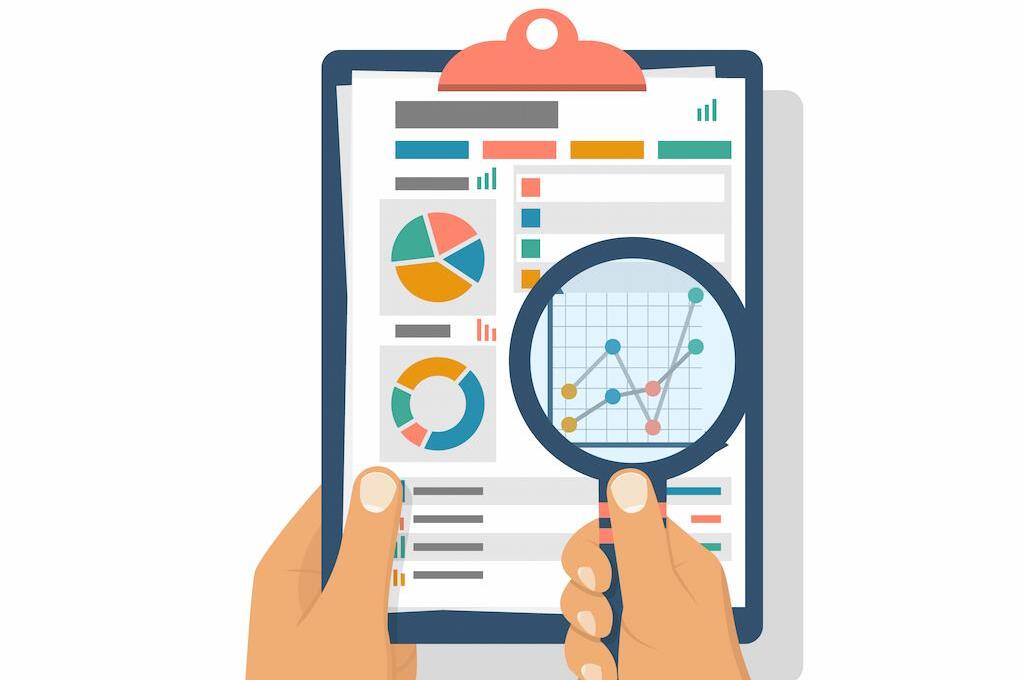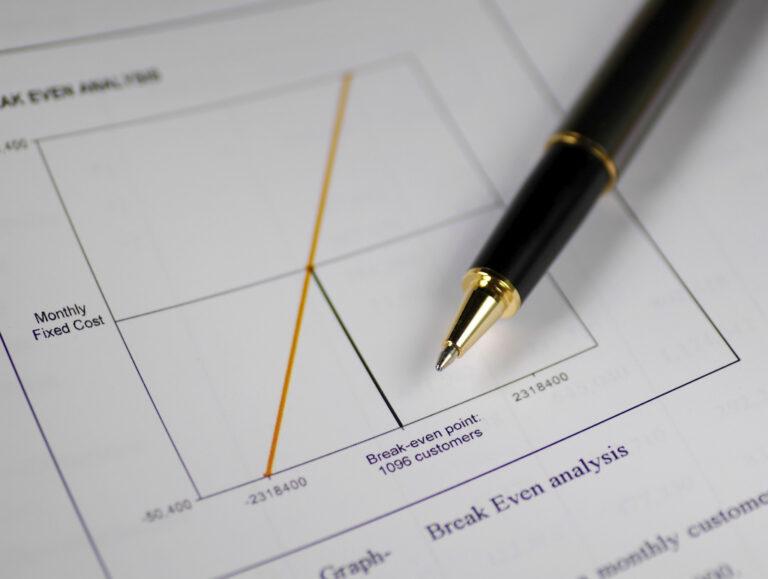It’s impossible to predict the future performance of your company, but a pro forma income statement is an asset that can help. In Latin, “pro format” means “for the sake of the form”. A pro forma financial statement is a way to forecast your future earnings over a particular period. By using historical financial statements and your projected cash flow, you can help determine how your business will perform in various scenarios.
At Cultivate Advisors, our revenue management consultants can help you put together a pro forma income statement to give you confidence and insight into how your company will perform in various scenarios.
What Is a Pro Forma Financial Statement?
Pro forma statements utilize hypothetical data or assumptions about the future values of your company to project performance. A pro forma statement doesn’t use generally accepted accounting principles (GAAP) and typically excludes one-time expenses that aren’t part of standard operating expenses, such as any restructuring costs following a merger. If a company believes an expense obscures the accuracy of its financial outlook, it can be excluded when factoring in financial projections.
Why Does Your Business Need a Pro Forma Financial Statement?

In addition to understanding how to make a pro forma income statement, companies also need to know the reasoning behind creating pro forma statements. There are many benefits to doing so in predicting the accuracy of future periods, including:
- Allows you to better plan for the future by factoring in the best, worst, and most likely scenarios in greater detail;
- Shows investors or lenders how you would leverage their money to help grow your business in a sustainable way;
- Helps you anticipate changes to your cash flow statements as your business grows, such as financial documents that revolve around entering a new tax bracket;
- Pinpoints financial limitations of which you should be aware.
In accounting, pro forma total expenses are usually used in a financial forecast that can help with financial modeling.
Pro Forma Statements vs. Budget: What Is the Difference?
You might be wondering how a pro forma balance sheet differs from a budget, as it’s likely tempting to think about the two as the same thing. Although the two documents share commonalities, they are two distinct financial tools that you can use to benefit your business.
Another simplistic way to think about a budget versus a pro forma is that a budget is a set plan while a pro forma is more of a prediction. It’s possible that your budget is based on the financial information that’s found in your pro forma statement. This makes sense, as you’ll want to make plans based on your predictions.
For example, let’s say your business has an income this year of $100,000. Based on your pro forma annual income statement, next year’s income will be $107,000. When you are putting together the budget for next year, you can factor in that $7,000 difference.
Pro Forma and GAAP Financials: What Is the Difference?

As there are no official rules when it comes to putting together pro forma income statements, investors must distinguish the difference between those and statements using generally accepted accounting principles (GAAP) or standard accounting practices. There are strict guidelines when using GAAP while pro forma income statement figures are seen as hypothetical.
4 Main Types of Pro Forma Statements
There are four main types of pro forma statements that you can use to manage your cash flows and the financial health of your business.
- Pro forma balance sheets: This is similar to a traditional balance sheet as it shows the accounts receivable, your cash flow statements, and other pertinent financial information. Business decisions and a business plan can be made based on this information.
- Pro forma cash flow: Another type of pro forma document is a pro forma cash flow that shows both you and potential investors the outflows and inflows of your company’s financial results within a set period that you determine. For example, it might cover a quarter or a fiscal year.
- Pro forma earnings: Using a pro forma earnings report can help you predict how your revenue will change in the upcoming year. It’s the inverse of a total expenses projection and allows you and key decision-makers to plan for various changes in your net income.
- Pro forma total expenses: This allows you to predict how your operating expenses will change in the year ahead.
Purposes of Pro Forma Statements
As we discussed, there are four essential types of pro forma statements, but there are slightly different scenarios for each. The purpose of the financial forecast will impact which one you choose.
1. Full-year Pro Forma Projections
A full-year projection factors in all of your financials for the fiscal year up until the present time. It then adds your projected cash flow outcomes for the remainder of the year. This allows you to showcase to partners or investors the potential of the business finances by the end of the fiscal year.
2. Financing or Investment Pro Forma Projections
If you’re talking to multiple investors to get their capital investment or you’re striving to convince your business partners that there’s value in additional financing, you should use a financing pro forma projection to help establish your case and outline the risk analysis. This factors in an additional cash flow from an outside source in addition to any interest payments that are factored in. It displays how this will impact your business’s overall financial position.
3. Historical with Acquisition Pro Forma Projections
As the name suggests, this pro forma projection considers the previous financial statements of your company in addition to the past financial statements of a company that you are hoping to purchase. It combines these numbers to showcase what your financials would have looked like in the case that you combined businesses earlier. You can use this data from the proposed transaction as a guide to what your projected income statement would be in the future and restructure from there.
4. Risk Analysis Pro Forma Projection
Examining both the best-case scenario and the worst-case scenario of your financial decisions, it helps you better prepare for the potential challenges that you might see in the future. For example, what if the estimated tax rate changes or you purchase new equipment that impacts you in the long run?
How to Make a Pro Forma Income Statement

Generally speaking, to create a pro forma income statement, you’ll want to follow the below five steps.
- Start by setting a sales goal for the particular time period at which you’re looking. In our example, let’s say you want to increase your income by $12,000 over the course of one year.
- Set a production schedule that allows you to reach your goal and map it out over the covered time period. In this case, you’ll need to make an extra $1,000 every month to meet your goal.
- Then you’ll want to map out how you’ll match your production schedule to achieve your goals. There’s more than one way to do this; you can achieve this by increasing your number of sales by a fixed amount each month, or you can do so in a gradual way. Your experience as a business owner can guide you in the right direction.
- At this point, you’ll want to factor in the loss by determining the cost of goods sold for every month within your projection. From there, deduct that number, as well as any other operating costs, from your overall sales.
- Finally, prepare your pro forma income statement using the above data that you’ve compiled.
As a pro tip, you’ll always want to ensure that your bookkeeping is up to date, including your gross profit and your net cash flow, as it allows you to come up with more accurate data. You can also use a cash flow projection tool for guidance.
How to Create a Pro Forma Cash Flow Statement
In order to create a pro forma cash statement, there are five general steps that you can follow:
- Start by setting a sales goal for the particular period that you’re considering. For example, maybe you are looking at a year, and you want to increase your income by $12,000 during this time.
- Next, set a production schedule that allows you to reach your goal and project it over that same time period. In the case of our example, you would need to earn an additional $1,000 every month for the next 12 months.
- Then, determine how you can match your production schedule. For example, you can do so by increasing your sales amount by a set amount monthly, or you can do so gradually. Utilize your expertise as a business owner.
- Make sure to calculate the “loss” portion of your “profit and loss.” To do so, calculate the cost of goods sold every month and deduct this number from your sales. If there are other expenses, these should be deducted.
- You’ll be able to prepare your pro forma income statement using the above information.
You can also use a cash flow projection tool to guide you through this process.
How to Create a Pro Forma Balance Sheet

Start by taking the information from your income statement and using the cash flow statement to determine where your money is going. This statement can be part of a larger cash flow that’s used for financial accounting and decision-making.
This projected cash flow allows you to see whether you’ll have excess money to spend on things such as paying off loans or saving for an upcoming investment.
How Cultivate Advisors Can Help
With Cultivate Advisors, we can help you navigate your pro forma expenses and leverage them to benefit your business. Whether you need help with your pro forma gross profit or you’re looking for information on an investment pro forma projection, we are here to help! Reach out to our revenue management consultants to get started.




